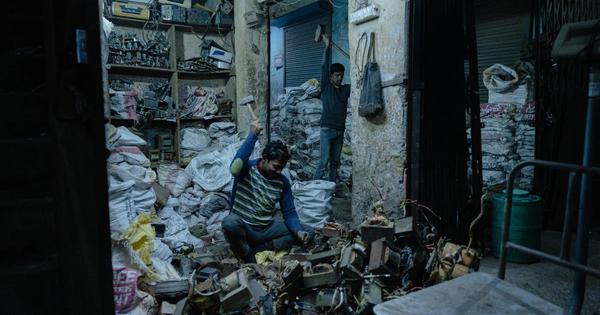India’s informal e-waste recycling presents both challenges and opportunities for environmental and economic reform.
In the outskirts of Delhi, a bustling informal e-waste recycling site known as Khatta reveals the complexities of India’s e-waste management system. Workers, like Rashid Khan and Mohammad Iqrar, navigate through heaps of discarded electronics, extracting valuable components amid hazardous conditions. The site, roughly the size of half a football field, is a part of a larger network where informal workers handle the country’s e-waste. They are typically paid around Rs 250 ($3) to unload trucks brimming with outdated gadgets from brands like Nokia, Samsung, and Sony.
India ranks as the third-largest producer of e-waste globally, generating approximately 1.75 million metric tonnes in the fiscal year ending 2024, which marks a 75% increase over the past five years. Alarmingly, close to 60% of this e-waste remains unrecycled, leading to significant environmental concerns and missed financial opportunities. The situation is compounded by India’s role as a destination for e-waste imports from various countries, including the United States and Yemen. This positions India as a major player in the global e-waste economy.
Used electronics are rich in recoverable materials such as gold, silver, and copper, which can be reused or repurposed in new devices. The potential for profit in recycling these materials has resulted in an industry valued at approximately $1.56 billion, according to estimates from an Indian market analytics firm in 2023. However, the majority of workers, estimated to be about one million, operate within the informal sector, often under precarious conditions.
While some e-waste operations are regulated and managed by companies like Attero and Ecoreco, where workers benefit from safer working environments, the informal sector remains dominant. Nearly 95% of e-waste workers engage in activities that lack oversight, which fosters an environment of exploitation and health risks. The informal sector comprises traders, dismantlers, and refurbishers, all of whom operate with little regard for regulations.
The dynamics of this informal economy are shaped by established networks, including powerful recycling dons who control significant portions of the market. Asif Malik, known as the ‘Monitor King’ of Khatta, exemplifies this network. His community has historically dominated the e-waste market in nearby Seelampur, managing over 83% of it. Malik’s family has transitioned from traditional scrap collection to the e-waste industry, reflecting broader economic changes that have occurred since India liberalized its economy in the 1990s.
The surge in consumer electronics has led to a corresponding increase in e-waste, with the Indian electronics market expanding from $11.5 billion in 2004 to $32 billion by 2009. Consequently, the country not only generates substantial amounts of e-waste but also imports hazardous waste from developed nations. This dual challenge of managing domestic and foreign e-waste is critical as India seeks to reform its recycling sector. The push for modernization amid increasing government regulations could pave the way for a more sustainable e-waste management framework, or it could exacerbate existing challenges if not executed effectively.








